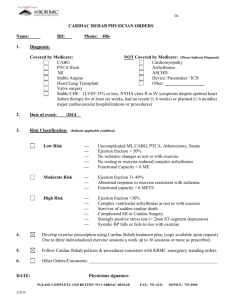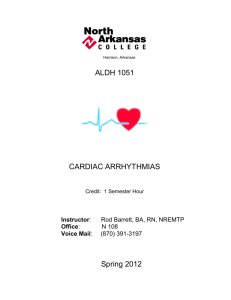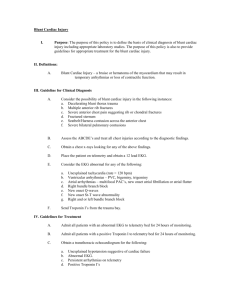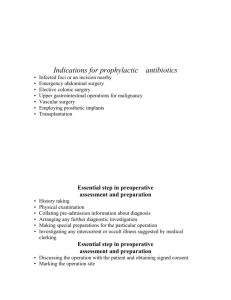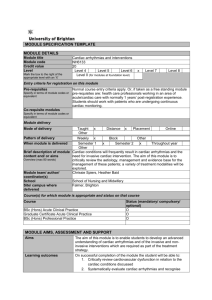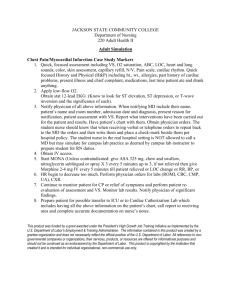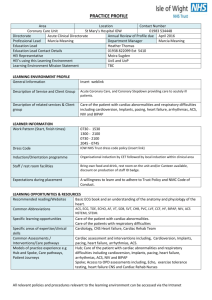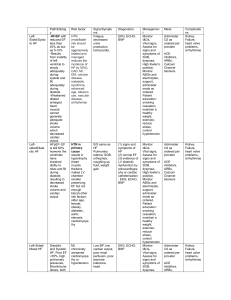File - Kelly Marchant RN
advertisement
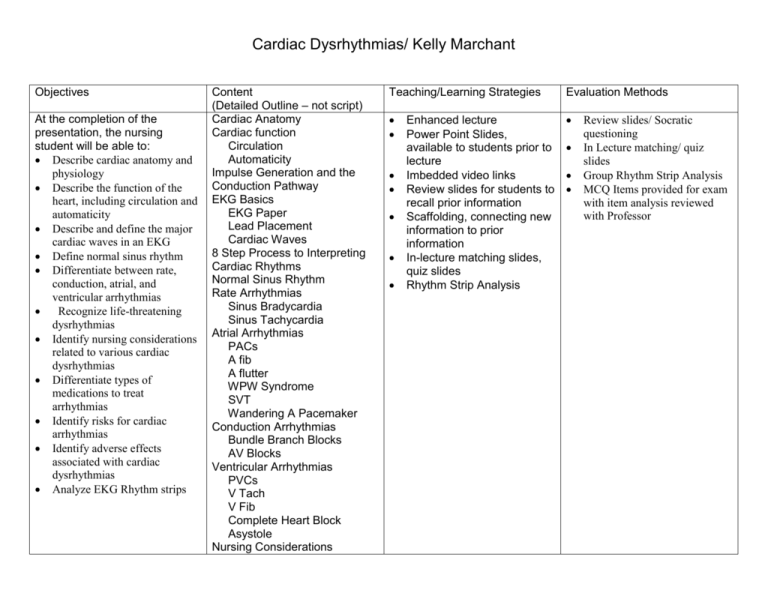
Cardiac Dysrhythmias/ Kelly Marchant Objectives At the completion of the presentation, the nursing student will be able to: Describe cardiac anatomy and physiology Describe the function of the heart, including circulation and automaticity Describe and define the major cardiac waves in an EKG Define normal sinus rhythm Differentiate between rate, conduction, atrial, and ventricular arrhythmias Recognize life-threatening dysrhythmias Identify nursing considerations related to various cardiac dysrhythmias Differentiate types of medications to treat arrhythmias Identify risks for cardiac arrhythmias Identify adverse effects associated with cardiac dysrhythmias Analyze EKG Rhythm strips Content (Detailed Outline – not script) Cardiac Anatomy Cardiac function Circulation Automaticity Impulse Generation and the Conduction Pathway EKG Basics EKG Paper Lead Placement Cardiac Waves 8 Step Process to Interpreting Cardiac Rhythms Normal Sinus Rhythm Rate Arrhythmias Sinus Bradycardia Sinus Tachycardia Atrial Arrhythmias PACs A fib A flutter WPW Syndrome SVT Wandering A Pacemaker Conduction Arrhythmias Bundle Branch Blocks AV Blocks Ventricular Arrhythmias PVCs V Tach V Fib Complete Heart Block Asystole Nursing Considerations Teaching/Learning Strategies Evaluation Methods Enhanced lecture Power Point Slides, available to students prior to lecture Imbedded video links Review slides for students to recall prior information Scaffolding, connecting new information to prior information In-lecture matching slides, quiz slides Rhythm Strip Analysis Review slides/ Socratic questioning In Lecture matching/ quiz slides Group Rhythm Strip Analysis MCQ Items provided for exam with item analysis reviewed with Professor Cardiac Dysrhythmias/ Kelly Marchant Objectives Content (Detailed Outline – not script) Medical Treatments Take Home Points Teaching/Learning Strategies Evaluation Methods

